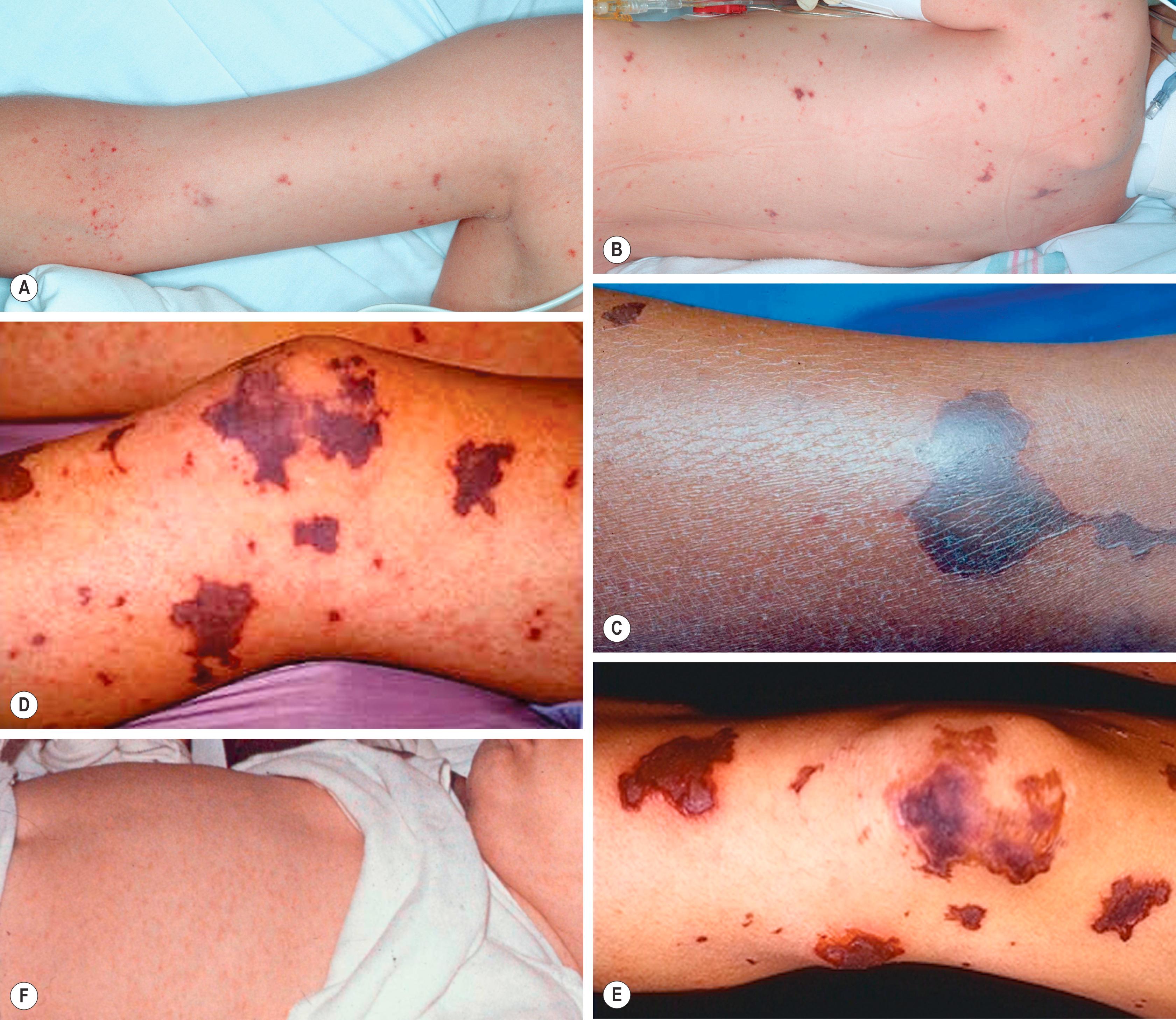Physical Address
304 North Cardinal St.
Dorchester Center, MA 02124
Purpura is a significant finding, especially because it has been associated with multiple infectious causes, some of which are life-threatening. Purpura results from trauma to blood vessels in the skin, causing hemorrhage into the surrounding tissue. Purpuric lesions do not blanch with pressure. Vessel damage can be the result of direct trauma, endothelial infection (e.g., rickettsial infection, meningococcemia), vessel occlusion, immune complex deposition, platelet depletion or dysfunction, or other conditions that cause vascular leakage of erythrocytes into the skin, mucous membranes, conjunctivae, or retina.
The clinical appearance of purpuric lesions depends on the size of the affected vessels, the location of the vessels, the extent of hemorrhage, and the coagulation status of the patient. Many noninfectious conditions can cause purpura. The morphology and other clinical findings may be useful in discriminating among likely causes. Purpuric lesions can be divided into six subtypes based on the size and morphology of the lesions: petechiae, macular purpura, ecchymoses, palpable purpura, noninflammatory retiform purpura, and inflammatory retiform purpura.
Petechiae , macular purpura , and ecchymoses are superficial, flat, cutaneous lesions that are 4 mm or smaller, 5–9 mm, and 1 cm or larger, respectively. Palpable purpura consists of raised, partially blanching, and erythematous to purple lesions, which typically are round. Retiform purpura has a lace-like pattern because the affected vessels are larger in the dermis and subcutis. Inflammatory retiform purpura initially is erythematous before evolving into purpura.
All purpuric lesions share similar changes in color based on the age of the lesion. They are initially bright red or deep red and become purple as the heme pigments break down and progress to green and yellow-brown before fading. The amount of time to fading depends on the amount of extravasated blood.
Petechiae, macular purpura, and ecchymoses are considered macular or flat purpura and result from simple extravasation of blood into the skin. Histologically, there is minimal inflammation in contrast to the inflammatory hemorrhage seen in microvascular occlusion or cutaneous small-vessel vasculitis, which results in palpable purpura. Inflammatory purpura results from occlusion by a clot with resulting ischemia and necrosis of the vessel. Vasculitis usually is caused by immune complexes deposited on the vessel lumen, which attracts neutrophils that destroy the complexes and injure the vessel wall. Retiform purpura and inflammatory retiform purpura result from occlusion and vasculitis, respectively, of larger, slow-flow vessels.
In patients with septicemia, purpura can arise from five main mechanisms: disseminated intravascular coagulation (DIC) and coagulopathy, direct vascular invasion and occlusion by organisms, infective vasculitis, emboli (e.g., in endocarditis), and vascular changes due to toxins. Many infections are associated with thrombocytopenia with development of petechiae or ecchymoses, with or without DIC. Invasion of microorganisms into capillaries can occur especially with a bloodstream infection (BSI) due to Neisseria meningitidis ( Fig. 70.1 ), Neisseria gonorrhoeae, and Pseudomonas aeruginosa . Diffuse vasculitis with pathologic evidence of rickettsiae in vascular endothelial cells is seen with Rocky Mountain spotted fever (RMSF) and epidemic typhus.

Immune-mediated vasculitis is associated with a broad set of petechial rashes associated with atypical measles, hepatitis B, and chronic meningococcemia. Intravascular catheter–associated infections and acute and subacute endocarditis can manifest as infectious embolization complicated by infarction, tissue hemorrhage, and necrosis. Endocarditis also can be associated with immune-mediated vasculitis and petechiae. The scarlatiniform, sometimes petechial, eruptions of Streptococcus pyogenes (group A Streptococcus [GAS]) are an example of toxin-mediated rashes.
Become a Clinical Tree membership for Full access and enjoy Unlimited articles
If you are a member. Log in here